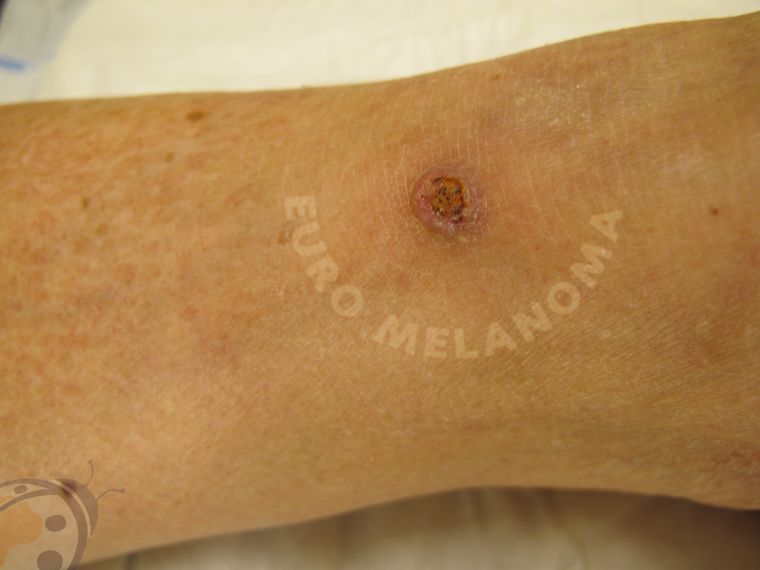Spinaliom
Select another type of skin cancer:
This is the second most common form of skin cancer, occurring in areas of the skin that have had a lot of sun exposure, such as the face and scalp. It presents as a crusty lump which may grow quickly and become ulcerated and weepy. It can spread rapidly, especially if on the lips, ears, fingers and toes, or in immunosuppressed patients. Surgical treatment to remove the lesions is essential.

Appearance
Squamous cell carcinomas often originate in actinic keratosis. They appear either as elevated lumps in the skin with a crusty surface, or as scaly red patches of skin. They grow relatively quickly, and can become ulcerated or weepy. They can often be mistaken for warts.
Locations
Squamous cell carcinomas can be found on any area of the body, including mucous membranes and the genitals, but they most commonly occur in areas frequently exposed to the sun, including the face, scalp, ears, lips, neck and limbs. They are particularly prevalent in areas which have suffered from sun damage, and occur alongside other signs of this damage such as wrinkles or loss of skin tone.
Evolution
Detected early enough, squamous cell carcinomas are very treatable. If left untreated, they eventually penetrate the deeper levels of the skin and can cause permanent disfigurement. In rare cases, squamous cell carcinomas can spread to the lymph nodes and other organs, potentially becoming fatal. Surgical treatment is therefore recommended.













